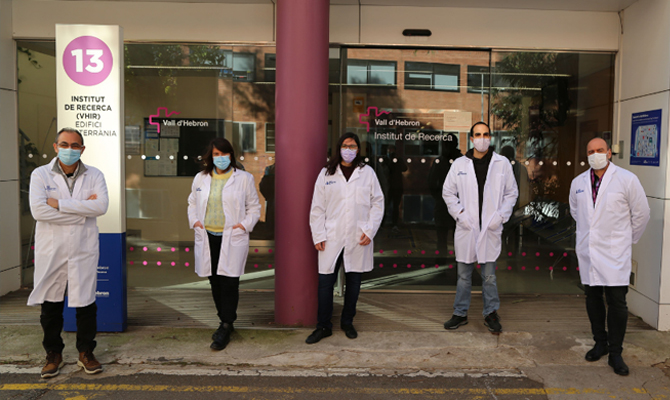The membrane of a cell is an effective barrier that makes it difficult to deliver molecules, such as therapeutic compounds, in a targeted manner. In recent years, various strategies have been developed to get the molecules inside the cell, but in general, the methods developed are still low in efficacy and/or toxicity. «The use of therapeutic nanoconjugates as nanomedicines facilitates the transport and release of drugs to target cells, but often with less efficiency than we would like», says Dr. Simó Schwartz Jr., head of the CIBBIM-Nanomedicine. Drug Delivery and Targeting research group at the Vall d’Hebron Institute of Research (VHIR). Given the need to be able to get more drugs or proteins into the cells, one of the alternatives to increase the amount that enters more quickly is what is known as cell penetrating peptides, which are small amino acid sequences that have the ability to interact with the plasma membranes of cells and, as a result of this interaction, make it easier to internalize the charge they carry. An example of application would be when a penetrating peptide binds to a therapeutic nanoconjugate, achieving a greater ability of the nanoconjugate to enter the cell and, therefore, to release into the cells the drugs that it transports.
To date, one of the most important penetrating peptides used is TAT. Now, a team of researchers led by Dr. Schwartz Jr., has discovered a sequence common to a family of peptides that significantly exceeds TAT results and facilitates cell internalization of nanoconjugates very significantly. These peptides are derived from a membrane protein called CD300 that has a very high ability to interact with sphingomyelin, a lipid found in all plasma membranes and also in intracellular organelles. «The peptides in our patent», explains Dr. Simó Schwartz Jr., “derived from an extracellular part of the CD300, which has a high capacity for binding to sphingomyelin. Compared to current reference treatment, TAT, CD300f7 is much faster, internalizes much more, and causes no toxicity. The use of these peptides in nanomedicine therefore facilitates and increases the process of internalization of all the cargo they carry. This means that we can introduce drugs into the cells in less time and in greater quantities”. The results of this discovery not only allow for faster internalization within the cell, but also open the door to being able to design much more effective therapeutic nanoconjugates.







